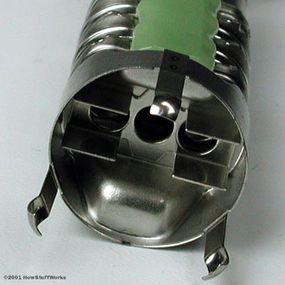If you have read How Television Works or watched What If I Shot My TV?, then you have heard about electron guns. They sound a little bit like something out of "Star Wars," but they're actually the devices that are the heart of most TVs and computer monitors.
The idea behind an electron gun is to create electrons and then accelerate them to a very high speed. In a cathode ray tube (CRT) -- the big glass tube used in most televisions and computer monitors -- the electrons get aimed at the screen, where they light up the phosphor on the screen to create the image.
Advertisement

The electron gun starts with a small heater, which is a lot like the hot, bright filament of a regular light bulb. It heats a cathode, which emits a cloud of electrons. Two anodes turn the cloud into an electron beam:
- The accelerating anode attracts the electrons and accelerates them toward the screen.
- The focusing anode turns the stream of electrons into a very fine beam.
When the electrons leave the accelerating anode, they are traveling at a reasonable fraction of the speed of light, and this gives them a lot of energy. When they hit the phosphor coating on the back of the front glass, the phosphor converts the electron beam's energy to photons and lights up.
A black-and-white TV has a single electron gun, while a color TV needs three guns because each pixel on the screen is made of a red, a green and a blue dot.
Here are some interesting links:
Advertisement
